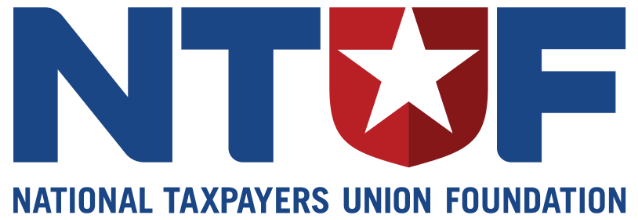The federal budget process is fundamentally broken. Instead of passing individual spending bills through regular order, Congress has increasingly relied on short-term continuing resolutions (CRs) or massive, last-minute “omnibus” packages—sprawling bills that few lawmakers even read before they vote. When these bills fail to pass on time, much of the government comes to a screeching halt, disrupting basic services like processing passports, making small business loans, and holding clinical trials for medical research. National parks close, and federal employees face uncertainty as paychecks are delayed. While some employees are furloughed, others deemed “essential” must continue working without pay.
The bipartisan Prevent Government Shutdowns Act, introduced in the Senate by James Lankford (R-OK) and Maggie Hassan (D-NH) and in the House by Jodey Arrington (R-TX) and Jimmy Panetta (D-CA), would end government shutdowns by authorizing federal agencies to continue operating at current funding levels if Congress fails to pass appropriations on time. During this period, the bill would ban taxpayer-funded travel by members of Congress and the Cabinet except to Washington and would limit House and Senate floor time to only budget and emergency matters.
Taxpayers and federal employees shouldn’t have to suffer because elected officials can’t agree on spending levels in a timely manner. This plan wouldn’t just prevent costly disruptions—it would force lawmakers to do their jobs without using shutdowns as leverage in political fights.
Why Do Government Shutdowns Happen?
The main culprit behind government shutdowns is Congress’s failure to pass the required annual appropriations bills before the end of the fiscal year (September 30) or to agree to a fiscal year plan before a short-term, stop gap continuing resolution (CR) expires. When this happens, the Anti-Deficiency Act prevents the government from spending money that hasn’t been appropriated. Without new spending authority, most federal agencies must halt operations unless their work is deemed “essential,” such as law enforcement, military operations, and air traffic control.
Ideally, Congress would follow the normal budget process, as outlined in the Congressional Budget Act of 1974:
The president submits a budget proposal.
The House and Senate each draft and pass 12 individual appropriations bills.
The bills are reconciled and sent to the president for approval.
However, this rarely happens on time (only in 1977, 1989, 1995, and 1997). Instead, Congress often resorts to continuing resolutions (CRs) to temporarily extend funding. When lawmakers can’t even agree on a short-term CR, the government shuts down. Recent federal government shutdowns include 2013 (16 days), 2018 (3 days), and 2018–19 (35 days), and on other occasions have come close to happening.
What Happens During a Government Shutdown?
Shutdowns affect taxpayers, government workers, and the economy in different ways:
Taxpayers: Services like passport processing, national parks, and IRS assistance are suspended, creating unnecessary headaches for Americans who rely on them. Based on past shutdowns, benefits for Medicare will still be paid out, however, the Congressional Research Service notes that there is uncertainty over whether some Medicare services would continue during a prolonged shutdown. Social Security benefits will be unaffected by a shutdown, but the Social Security Administration would be unable to process new applications for benefits.
Federal Employees: While essential personnel (e.g., Transportation Security Administration agents and military service members) must continue working without pay, non-essential employees are furloughed until funding resumes. This leaves thousands of families in financial limbo for the duration of the shutdown. The Government Employee Fair Treatment Act of 2019 guarantees that furloughed employees receive back pay when regular funding is resumed following a lapse. Federal contractors, however, have generally not received the same benefit.
Economic and Budgetary Impact: Past shutdowns have cost billions in lost productivity, delayed contracts, and reduced consumer confidence. Shutdowns also impose hidden opportunity costs, as federal agencies must prepare for potential shutdowns—redirecting staff time to contingency planning instead of their normal responsibilities. Once a shutdown ends, agencies must spend time restarting operations rather than focusing on their core missions. A 2019 report from the Senate Homeland Security and Governmental Affairs Committee estimated that the three previous shutdowns cost “at least $338 million in other costs associated with the shutdowns, including extra administrative work, lost revenue, and late fees on interest payments.”
How the Prevent Government Shutdowns Act Would Fix This
The Prevent Government Shutdowns Act would ensure that, if Congress fails to pass spending bills on time, federal agencies automatically continue operating at current funding levels. The bill establishes a mechanism for an automatic CR, maintaining funding at the previously established levels. This CR would be provided for rolling two-week periods. If no funding is approved after 14 days, appropriations and funds would be made available for an additional 14 days.
Beyond keeping the government open, the bill also incentivizes lawmakers to complete their budgetary obligations. The bill also establishes procedures in the House and Senate so that only appropriations and emergency legislation may be considered until the funding gap is resolved. In addition, it would curtail travel by Cabinet officials and members of Congress except for travel to Washington until a budget agreement is achieved.
Conclusion
Government shutdowns are a symptom of a dysfunctional budget process. Taxpayers shouldn’t suffer due to Congress’s inability to meet funding deadlines. The Prevent Government Shutdowns Act offers a simple, commonsense solution: keep the government running while lawmakers finish their work. With another budget deadline approaching, now is the time for Congress to put an end to shutdowns once and for all.

